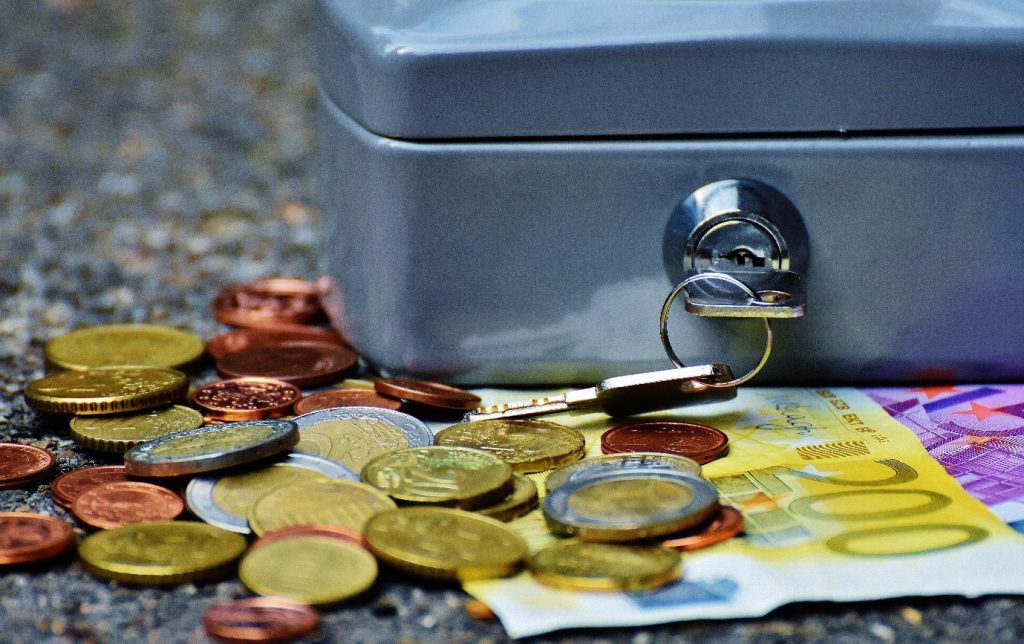When you think of retirement, what image pops into your head? Probably an old person, age 65, sitting on a park bench, basking in the sun. Although it’s a nice image, the idea of only retiring in old age can be demotivating to the younger generation. So, let’s re-imagine retirement.

Instead of being 65, you’re 35. And instead of a park bench, you’re sitting at a coffee shop, enjoying a cappuccino. You got up without an alarm, you didn’t have to go to work, and you can drink a coffee at your favorite café whenever you like. Everyone else has to go to work, but you can enjoy your life on your own time while you’re still young with your finances sorted.
That’s the idea behind the F.I.R.E. movement – being Financially Independent so you can Retire Early.
What exactly is F.I.R.E.?
F.I.R.E. is a lifestyle movement that allows people to become financially independent at a young age and retire early through aggressive savings tactics and minimalistic living. It was coined in 1992 by financial gurus Vicki Robin and Joe Dominguez in their book Your Money or Your Life. Thanks to blogging, podcasts and online sharing, it has now become very popular among young people.

How does F.I.R.E. work?
The objective of F.I.R.E. is to consciously maximize your savings rate by increasing your income, reducing your expenses—or both—to an extreme extent. You then accumulate enough capital and assets to live off the returns of your hands-free investments—no salary required. Once you’ve reached this point of financial independence, you can retire completely and live a minimalistic life off of your investment returns. Or, if you prefer, you can continue with part-time work and live a more lavish lifestyle. You can choose your lifestyle based on the ‘F.I.R.E. scale’.

OK, but how does it really work?
Let’s take a look at the math being F.I.R.E. in a very simplistic way:
Whereas most financial plans would advise you to save 10% of your salary, F.I.R.E. goes into overdrive and changes that to 70%. Why? Because of the math. You want to retire early, meaning, you need to get enough capital as quickly as possible, so you can stop working at a younger age and let your money work for you in investments.
Here’s a calculation to determine how many years you’ll have to work before you can become financially independent enough to retire:
1 year, minus the % of your savings rate / the % of your savings rate = number of years you have to work to save up 1 years’ worth of living expenses
1-0.1(Savings rate of 10%)/0.1 = 9 years of work to save for 1 year of living expenses.
You can use this calculation to try out different savings strategies, but the idea of F.I.R.E. is to use the most aggressive saving percentage, like this one:
1-0.75(Savings rate of 75%)/0.75 = 0.33 years of work to save for 1 year of living expenses.
From these calculations you can see that, in theory, the higher your savings rate is, the quicker you’ll reach financial independence and be able to retire.
This is why people who follow the F.I.R.E. lifestyle aim to save 50% or more of their annual income. At a 75% savings rate, as shown above, it would take less than 10 working years to save 25 times your average annual living expenses. (This is based on the suggested ‘4% safe withdrawal’ rule for a comfortable life in retirement.)
Why does it attract so many young people?
Since 2010, millennials have taken a liking to the concept of F.I.R.E. This could be due to their generational characteristic to make the most of life and focus on time rather than money.
And it’s not difficult to see why they find it appealing. Who wouldn’t want to retire at a young age, not having to worry about working to earn a salary and simply living the good life from investments? Although it will take hard work and sacrifice, it’s a sacrifice that may be worth it for many people.

How Bondora can help your F.I.R.E. plans
When it comes to hands-free investments, Bondora is a great option to add to your portfolio. With Go & Grow, you can begin with any amount you wish and contribute to your account whenever you want to grow your investment even more. You can also request to cash out your money at any time. So, when you use Go & Grow as your investment choice, you can decide for yourself what your goal amount should be and simply take out your returns whenever you like. While your returns act as a steady inflow of revenue, the rest of your Go & Grow investment stays in your account and continues to work for you.
How to know if F.I.R.E. is a viable option for you
Although F.I.R.E. promises financial independence, it isn’t just some shortcut to an easy life. It will take years of hard work and sacrifice – if you save 75% of your earnings there’s not a lot of money left for a fun lifestyle. Although rewarding, you’ll have to decide whether the sacrifice is one that you can live with. It’s important to note that no investment is without some form of risk; so you’ll have to take global economies, market crashes, etc. into account with your investments as well.
If you decide to go for it, then you can really make the most out of your money in a relatively short amount of time. But let’s say you decide after 5 years that you don’t want to go through with it for whatever reason, then that’s okay. In those 5 years you would have saved a large amount that, if invested wisely, could continue to work for you in the best way.
And even if your F.I.R.E. plans go wrong and you decide to ditch it, there are benefits from the experience that you can benefit from in future. You’ll have developed the habit of controlling your expenses, saving money, investing, planning, and being thoughtful about your money. And no matter what your investment strategy is; with those financial habits, you’re on the right track to achieving financial independence.